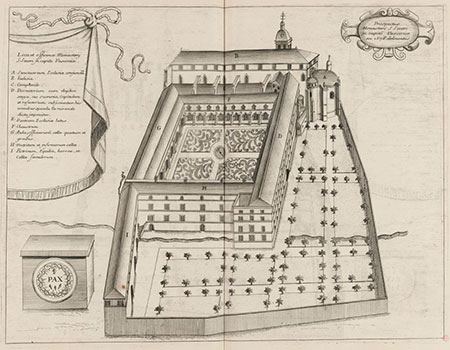Tradition places the tomb of Saint Severus, a martyr and evangelizer of this region who was decapitated in the early 5th century, at this site. A chapel was erected on his burial site, which later became home to a monastery active from the 7th century onward. This place of worship became the nucleus of the Abbey of Saint-Sever and of the settlement that gradually developed around it. However, this first monastic establishment fell into ruin due to the invasions of the 9th and 10th centuries.
The monastery was rebuilt thanks to William I of Gascony (c. 925–996), who, in 988, acquired the remains of the old monastery and entrusted them to a new community of monks, likely established around 993 under the leadership of Abbot Salvator. The founder provided the monastery with economic support and succeeded in placing it under the direct authority of the Holy See. Between 1028 and 1072, the monastery was led by Abbot Grégoire de Montaner, a former monk of Cluny, who initiated the construction of the current church. After a fire, the building was reconstructed, and the same abbot consecrated it in 1072, the year of his death, although construction continued for several more years.
Following the example of his predecessors, Richard the Lionheart (1157–1199), King of England and Duke of Aquitaine, became involved in the affairs of the monastery, confirming its possessions and privileges. Similarly, Henry III of England (1207–1272) maintained a relationship with Saint-Sever. The monastic complex suffered damage on several occasions due to the conflicts arising from the Hundred Years’ War, especially in 1435, when it was burned and destroyed. Around this time (c. 1440), the monastery adopted the commendatory regime, with Pierre de Béarn serving as its first commendatory abbot.
In 1569, during the Wars of Religion, the site was occupied for a prolonged period and fell into ruins. During the looting, liturgical objects, the archives, and other assets were lost. The site was later restored by the Congregation of Saint-Maur, which settled there in 1645 and remained until the Revolution, when the monastery was suppressed. The church then took on the functions of a parish and was rebuilt with Neo-Romanesque features. Despite the modifications, it remains a notable example of a church with three naves and seven staggered apses opening onto a transept divided into three sections. The cloister, from a later period, is also preserved.
Beatus of Saint-Sever
The Beatus of Saint-Sever, now preserved in the Bibliothèque nationale de France, originates from this abbey. It is a late derivative of the Commentary on the Apocalypse by Beatus of Liébana, notable for being created outside the Iberian Peninsula. It was copied during the abbacy of Grégoire de Montaner (1028–1072) with the participation of the illuminator Stephanus Garsia.

Monasticon Gallicanum
Bibliothèque nationale de France
- BEAUNIER, Dom (1910). Abbayes et prieurés de l'ancienne France. Vol. 3: Auch, Bordeaux. Abbaye de Ligugé
- BRUTAILS, Jean-Auguste (1900). L'église abbatiale de Saint-Sever (Landes). París: I. Nationale
- CABANOT, Jean (1978). Gascogne romane. Zodiaque. La nuit des temps
- CABANOT, Jean; i altres (2014). Une abbaye au coeur de la Gascogne, Saint-Sever (988-1791). Dax: CEHAG
- DU BUISSON, Petro Daniele (1876). Historiae monasterii S. Severi libri X. L. Dehez
- DUCOURNEAU, Alexandre (1844). La Guienne historique et monumentale. Bordeaux: Coudert
- GUÉRIN, Paul (1888). Les Petits Bollandistes. Vies des saints. Vol. 6. París: Bloud et Barral
- KLEIN, Peter K. (2016). Le Beatus de Saint-Sever. Contexte historique et iconographique. Cahiers de Fanjeaux, 51. Tolosa de Ll.: Privat
- PEIGNÉ-DELACOURT, Achille (1877). Monasticon Gallicanum. Paris: G. Chamerot
- SAINT-MAUR, Congregació de (1715). Gallia Christiana in provincias ecclesiasticas distributa. Vol. 1. París: Coignard
- TAUZIN, Camille (1914-1916). Saint-Sever, Cap de Gascogne. Bulletin de la Société de Borda, vols. 34-40





















